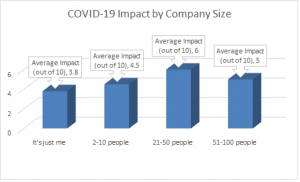Content

Costs are recognized as expenses in a particular period if there is a direct association between costs and revenues for the period or the costs cannot be assigned to the generation of revenues of any period in the future. This study provides us with several contributions to contemporary research on matching.
To correct a lag situation, accountants often post accrued expense amounts that represent the normal monthly expense amount. These accruals maintain the standards of the matching principle since all revenues will be matched with the expenses incurred to generate those revenues in the same period. One of the benefits of using the matching principle is financial statement consistency. If revenues and expenses are not recorded properly, both your balance sheet and your income statement will be inaccurate.
Originally, there were 14,296 firms fulfilling the above three criteria set for the sample firms. However, 5,416 firms had missing values in financial data and were excluded from the sample. Moreover, 654 firms were excluded from the sample as outliers due to extreme values obtained in estimating the matching function model. Almost all firms have financial statements until 2014 or 2015 covering a period characterized by the 2008 financial crisis that produced a significant economic shock to the global economy. This crisis first touched the US financial sector in 2007, but the effects spread to several national economies, resulting in what has often been called the Great Recession.
This concept also makes extensive use of accruals and deferrals to balance general ledger accounts when no information has been posted to the accounts. Companies may experience a lag in posting certain expense items to their general ledger, such as utilities expenses, freight expenses, or payroll expenses.

An additional similar example related to the Matching Principle is accrual salaries. Let me be more specific so that you can better understand the wages of the salesperson. Our Highly Experienced Team recommends Products or Services after thoroughly researching them to ensure we provide an unbiased, comprehensive solution for your Home or Business. We Stand by our Reviews and when you Purchase something we’ve Recommended, the commissions we receive help support our Staff and our Research Process. Employee bonuses depend on the performance of a company for a given period. A Salesman was able to bring in $25,000 to the company for the year 2020 and is entitled to a $2,500 commission.
What Is Modified Accrual Accounting?
Looking at the cash flow, investors will be able to see whether there is enough cash to cover the company’s payables. The payment will no longer have an impact on the Income Statement but will decrease both the payables and the cash account. The matching principle stabilizes the financial performance of companies to prevent sudden increases in profitability which can often be misleading without understanding the full context. PP&E, unlike current assets such as inventory, have a useful life assumption greater than one year. GoCardless is authorised by the Financial Conduct Authority under the Payment Services Regulations 2017, registration number , for the provision of payment services. Still, these are limited situations where it becomes more difficult to use.
In general, the Matching principle helps both accountants recognize the accounting transactions in some uncertain situation and users of financial transactions for using the entity’s financial information. In December 2016, the salesman could earn 2,000$, but the commission payment will be payable in January of the following year.
Dichev and Tang used the contemporaneous revenue-expense correlation to reflect the quality of matching in large firms showing a significant decline in quality over 40 years. Their results suggested that accounting factors such as the quality of accruals are a substantial determinant of the observed temporal patterns and changes in the real economy play only a secondary role. It is specified as a multiplicative Cobb-Douglas-type function of three categories of expenses .
Total Sales Vs Total Revenues
Match the expenses in a current period of time during which they incur rather than a time when payment is complete. Like the payroll accrual, this entry will need to be reversed in May, when the actual commission expense is paid. This accrual reflects the correct amount of payroll expenses for the month of April. This entry will need to be reversed in May, or May payroll expenses will be overstated. Jim currently employs two sales people, who receive a 10% commission on sales each month. In the month of January, Jim’s business had sales of $9,000, which means that Jim owes his salespeople $900 in commissions for January. Applicant Tracking Choosing the best applicant tracking system is crucial to having a smooth recruitment process that saves you time and money.
- The GAAP matching principle is one of several fundamental accounting principles that underlie all financial statements.
- Since the payroll costs can be directly linked back to revenue generated in the period, the payroll costs are expensed in the current period.
- If you’re using the accrual method of accounting, you need to be using the matching principle as well.
- Therefore, the sign of the effect of noise r on the volatility of earnings depends on this situation on the noise term r, steady growth rate g and average earnings S̄−Ē.
- When investors look at the financial statements of companies that accurately employ the matching principle, they look at reports that are connected and make sense.
When an item of revenue is entered in the profit and loss account, all the expenses incurred should be set down on the expenses side. The $4,000 in respect of tax attributable to the prepaid income is a temporary difference which is deductible against future tax payments and should therefore be deducted from the tax expense calculation for 2012. Matching principle therefore results in the presentation of a more balanced and consistent view of the financial performance of an organization than would result from the use of cash basis of accounting. The most common include accounts payable, accounts receivable, goodwill, accrued interest earned, and accrued tax liabilities. Accrual accounting provides a more accurate picture of a company’s financial position some small businesses use cash accounting. Accrual accounting is considered the standard accounting practice for most companies except for very small businesses and individuals.
Accounting Concepts
However, these rules indirectly relate to expense recognition because the organization must track both revenue and cost items to solve its profitability equation. Regulatory guidelines also connect revenue and expense recognition when referring to the matching principle. These edicts are as diverse as generally accepted accounting principles , international financial reporting standards and rules from the U.S.
The increased incremental revenue due to the marketing effort cannot be allocated directly with the cost since both the timing and amount is unknown. In this case, the online marketing spend will be treated as an expense on the income statement for the period the ads are shown in, instead of when the resulting revenues are received. The matching principle also calls for expenses to be recognized in a “rational and systematic” manner. This is the reason why an asset’s depreciation is split over the useful life of it and recognized over many periods instead of being recorded as a lump sum in just one period. It is expected that these items will last five years and have no residual value for resale. Instead of recognizing the entire $25,000 in the first year, you should list the assets on your balance sheet and use a depreciation expense to claim $5000 per year on your income statement. Accrual accounting entries require the use of accounts payable and accounts receivable journals, as well as a few others for deferred revenue and expenses, depreciation, etc.
- Under GAAP and IFRS, a corporate bookkeeper recognizes revenue by debiting the customer receivables account and crediting the sales revenue account.
- In this study, CODL was used to measure the accuracy of matching and compared only with REC.
- According to many tax authorities, SaaS companies must use the accrual accounting system, which stipulates that you record revenue when it is earned, i.e., the revenue recognition principle.
- However, these rules indirectly relate to expense recognition because the organization must track both revenue and cost items to solve its profitability equation.
- Applicant Tracking Choosing the best applicant tracking system is crucial to having a smooth recruitment process that saves you time and money.
In most places, financial transactions including both revenues and expenses must be recorded in the general ledger according to standard accounting guidelines. These guidelines can vary from place to place, but almost every jurisdiction enforces certain uniform rules that apply to all businesses and financial actors in the market. In the United States, the Financial Accounting Standards Board writes and issues accounting guidelines for companies to follow when conducting business. Not following the rules or failing to apply the rules properly can lead to sanctions and fines. Proper matching can help accountants realize whether there’s a discrepancy before records are filed in any official way. In the accrual accounting method, revenue is accounted for when it is earned.
Relationship Between Revenue & Retained Earning
In this study, the matching function is specified for three main categories of expenses . Thirdly, the matching function approach takes explicitly account of the potential increase in the productivity of expenses using a Solow-type of residual. The distinct nature of the matching function approach is that it takes explicitly account of different expense components instead of concentrating on total expense alone. Dichev and Tang showed that accrual components have lower correlation than cash components so that the correlation between total revenues and expenses is driven down when accounting is based on more accruals. Dichev and Tang also split the accrual component of expenses into working capital, long-term operating and financing accruals to search for the differential impacts of these components.
Thus, Dichev and Tang concluded that accounting-related factors play a substantial role in the temporal patterns of revenue and expenses. According to the revenue recognition principle, revenue must be recognized and recorded on the income statement when it’s earned or realized. Businesses don’t have to wait for the cash payment to be received to record this sales revenue. An example of revenue recognition would be a contractor recording revenue when a single job is complete, even if the customer doesn’t pay the invoice until the following accounting period. Not all costs and expenses have a cause and effect relationship with revenues. Hence, the https://www.bookstime.com/ may require a systematic allocation of a cost to the accounting periods in which the cost is used up.
The matching principle is part of Generally Accepted Accounting Principles that states that expenses and related revenues need to be reported in the same period of time. Assume the revenue per cash basis is recognized in January 2017, then the cost of goods sold $40,000 should also recognize in 2017 as well.
Prepaid Expenses
Appointment Scheduling Taking into consideration things such as user-friendliness and customizability, we’ve rounded up our 10 favorite appointment schedulers, fit for a variety of business needs. Business Checking Accounts Business checking accounts are an essential tool for managing company funds, but finding the right one can be a little daunting, especially with new options cropping up all the time. CMS A content management system software allows you to publish content, create a user-friendly web experience, and manage your audience lifecycle.

Usually, a company applies the matching concept by being reasonably certain which items will generate revenue and matching them with any possible expenses for those items. To illustrate, if a company produces an item costing $100 that it later sells for $150, the company must decide the accounting period in which it is reasonably certain to receive the $150. When this is decided, the company must match the $100 cost with the $150 revenue as an expense, resulting in $50 income from sales. Interestingly, not all companies take these steps in the same order; sometimes expenses are first identified and later revenues are matched to them. In the regression equations, matching quality is measured by CODL and by SREC, for comparison. The importance of the expenses from different categories is measured by the estimates for the matching elasticities allowing us to test hypotheses H2a, H2b and H2c, respectively.
Understanding The Cash Flow Statement
If a company misses on an expense or skips putting it on the statement, it would give an inaccurate picture of the financial position of the business. For instance, a company that adds the expense earlier than appropriate will show a lower net income. Similarly, if a company recognizes the same expense later than the appropriate time, it will result in higher net income. Product costs that the company is yet to match to the revenue come on the balance sheet as an asset. The income statement shows the product costs that the account managers match to the revenue and the period costs of the current period. So, it means that the matching principle directly affects the net profit or loss. Accrual accounting is a financial accounting method that allows a company to record revenue before receiving payment for goods or services sold or expenses are recorded as incurred before the company has paid for them.
Thus, they are typically tied to a span of years and allocated as an expense to each of those years. Asset depreciation is the allocation method that is used to spread the cost and useful life of the asset against the revenue generated from its use. In this case, a $100,000 asset with a useful life of ten years and no salvage value would allocate and match $10,000 of deprecation expense for ten years against those revenues for the same accounting periods. The Matching Principle means when revenues are generated, the expenses incurred to generate those revenues should be reported in the same accounting period . This principle is central to accrual accounting, the method required by GAAP, since the cash accounting method merely reports expenses when paid. However, the matching principle is a further refinement of the accruals concept.
Modified accrual accounting is a bookkeeping method commonly used by government agencies that combines accrual basis accounting with cash basis accounting. While the IRS does not require a single method of accounting for all businesses, it does impose certain limitations that impact which accounting method a company can use. For example, a company cannot use the cash method if it is a corporation with average annual gross receipts greater than $26 million in 2021 and $27 million in 2022. Depreciation ExpenseDepreciation is a systematic allocation method used to account for the costs of any physical or tangible asset throughout its useful life.
Empirical Data And Methods
A company that incurs an expense that it has yet to pay for will recognize the business expense on the day the expense arises. Under the accrual method of accounting, the company receiving goods or services on credit must report the liability no later than the date the goods were received.
Cash accounting is the other accounting method, which recognizes transactions only when payment is exchanged. Another matching principle example can be considered of the service income that is received on Dec 27th. However, a temporary entry is made on Dec 22nd, since John received the contract on this date, and as on that day,, he needs to show the supposed value of the transaction . Buildings Are Routinely Reduced By DepreciationDepreciation of building refers to reducing the recorded cost of a building until the value of the structure either becomes zero or reaches its salvage value.
Put it simply, a company must recognize expenses on the financial statements when it produces the revenue as a result of those expenses. So, an expense that does not directly relate to the revenue should come in the income statement in the accounting period in which the company benefits from it. For example, general administration expenses and salaries across departments are not easily identified with the future benefit of revenues, and are thus immediately expensed during the period they are incurred. Immediate recognition also includes accrued expenses such as payroll and rent incurred for the period but not yet paid. Accrued expenses are recorded in the adjusting entries process to match expenses incurred but not paid with revenue generated in the period. The matching concept is the guideline accountants use to be sure expenses are related to revenues and show up in the same period.
Benefits Of The Matching Principle
In this case, even though you are earning $7500 at the end of each month, you may not be receiving all of it until some days, weeks, or months later—or, unfortunately, sometimes not at all. In this case, you still recognize the revenue of $7500 each month using an accounts receivable journal entry and then later move the revenue to your cash account when you receive the payments. In order to properly use the matching principle for your prepaid expenses, you will record a recurring journal entry in the amount of $1,250 each month for the next 12 months. Business expense categories such as prepaid expenses use the matching principle in similar fashion as depreciation.